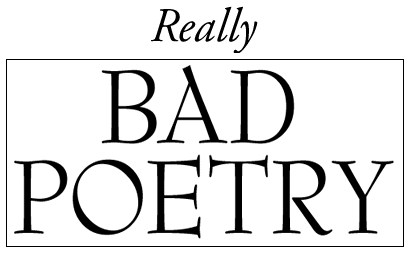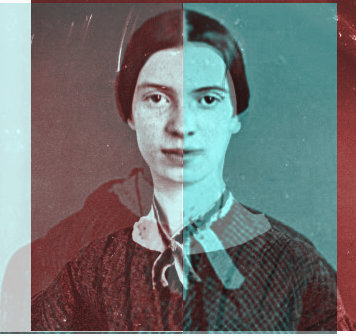Messing With Perspective



Introduction
Humans have a unique capacity for self-awareness. Individuals are capable of perceiving how they see themselves, as well as how others see them. Inevitably, this leads to heightened awareness of all aspects of human experience and creation. Channels of communication and information are inherently susceptible to human scrutiny because a divide is formed between the source and the interpreter. Debates on the effectiveness of face to face interaction are sketchy as far as understanding is concerned, but writing is worse. The author hopes the reader will take in the meaning of their words, but it is a flawed concept of communication. By nature, humans look for loopholes and compressed forms of understanding. If it is possible to lump something together into neat little groups, it will be nearly indistinguishable from others like it. Poetry faces these problems because it is already controversially taught and is typically very personal and hard to analyze. The basis of poetry is to say the most with the least amount of words. This makes teaching poetry especially difficult in that it is so subject to misinterpretation. By examining methods of study and teaching in the poetry realm an awareness can be gained in the areas of biased perceptions in teaching, categorical perception, and young vs. old perceptions.
Am I Biased?
Biased perceptions do not necessarily depict fault on the part of the instructor, but generally refers to a tendency of reading into personal interests and insights. For example, Robert Frost’s “The Road Not Taken” has been taught to students of all ages with great praise. The classic last stanza captures the minds of individuals after a lofty introduction by teachers, and induces quite an optimistic tone in the reader. However, when all of the words are digested, the poem’s persona becomes unsure and almost regretful of his decision in the woods. Lines sixteen through twenty may describe a conflicting view of the previously depicted meaning:
I shall be telling this with a sigh
Somewhere ages and ages hence:
Two roads diverged in a wood, and I –
I took the one less traveled by,
And that has made all the difference. (Frost qtd. in Meyer 355)
The most common perception of these lines are that the road “less traveled by” is a metaphor for creating one’s own path through life. This has become an encouraging beacon for many young people and for good reason. However, this may not be Frost’s intended message. In Rita Ray’s article, “The diversity of poetry: how trainee teachers’ perceptions affect their attitudes to poetry teaching” published in The Curriculum Journal, she describes how easy it is to use poetry instead of objectively studying it; “…attention is drawn to the importance of understanding the difference between poetry as a specialist subject and as a vehicle for teaching other things.” (1). Poetry should be analyzed by itself in an effort to understand the author’s intent and perspective.

Don't Lump Me Together.
Labeled categories may be the most effective way of inducing a desired reaction in an individual. It presents itself as an involuntary manipulation of the reader. For example, if someone flips through a textbook and finds a chapter called, “Bad Poetry” the reader will inevitably perceive the poetry as automatically bad. It has already been established that humans are susceptible to labeling and grouping, so this categorization would have a direct effect on a person’s perception of the poem. In the introduction of the book Very Bad Poetry edited by Kathryn and Ross Petras, a description of bad poets is presented: “…a wooden ear for words, a penchant for sinking into a mire of sentimentality, a bullheaded inclination to stuff too many syllables into a line or phrase, and an enviable confidence that allows one to write despite absolutely appalling incompetence.” (xv, xvi). There are concrete aspects of poetry that just do not work, but it seems overly universal to assume everyone perceives it as such. This theory is equally applicable to great poetry. Famous poets that have made it into the literary canons have an advantage in the educational realm just by claiming perpetual shotgun with instructors. Concurrently there are aspects of these poems that deserve attention and praise. For example the style, meter, and content of any given Emily Dickinson poem is well thought out and intentional, but there are also many quirks that separate her from other great poets. Her use of dashes and intermediate capitalization as well as her lack of titles suggest personal intent but are not requirements for good poetry. In her poem “He fumbles at your Soul”, all of her quirks are present and obviously deliberate, however this ambiguity does nothing to degrade from the poem’s excellence:
He fumbles at your Soul
As Players at the Keys
Before they drop full music on –
He stuns you by degrees –
Prepares your brittle Nature
For the Ethereal Blow
By fainter Hammers – further heard –
Then nearer – Then so slow
Your Breath has time to straighten –
Your Brain – to bubble Cool –
Deals – One – imperial – Thunderbolt –
That scalps your naked Soul –
When Winds take Forests in their Paws –
The Universe – is still – (Dickinson qtd. in Meyer 325)
In conclusion, poetry is difficult to lump together into categories and by doing so great gems may be lost. No two poems are alike and their differences should perceived beyond the label they are given.
Please, Just One More!
The bedtime story is a classic tradition known to induce sleepiness in rambunctious children worldwide. Nursery rhymes and children’s literature are designed to teach young individuals important life lessons in ways that are engaging and interesting to their developing minds. As children grow and learn, they begin to assign themselves roles in their everyday lives and in society. Background and environment have huge roles in the development of children as well as the people who are around them the most. It is logical to assume that a person is the sum of their experiences and their perceptions would develop accordingly. A child will hear a story like Moby Dick and imagine an old crazy guy trying to harpoon a beastly, white, whale. More experienced individuals may see, however, a man wrestling with internal battles set in isolation from outside help. In poetry, there are many prominent children’s authors, however one stands out above the rest; Shel Silverstein. His collections for young readers include, Where the Sidewalk Ends , Falling Up, A Light in the Attic, and many others that can be perceived in ways that far exceed age. The poem “Listen to the Mustn’ts” is a prime example of this:
Listen to the MUSTN’TS, child,
Listen to the DON’TS
Listen to the SHOULDN’TS
The IMPOSSIBLES, the WON’TS
Listen to the NEVER HAVES
Then listen close to me—
Anything can happen, child,
ANYTHING can be. (Silverstein 27)
A child may hear this and be confused because two minutes ago their parent was probably telling them they couldn’t watch any more television before bed. As the years roll by, they will forget about the bedtime stories and their mother’s nagging. Then, one day a professor will assign one of the poems their parents read them when they were young, and the meaning will have completely shifted. Suddenly, the “mustn’ts” and the “impossibles” will have faded into the moments when their internal conscience kicked in at the college party, and the moment they first told someone they loved them. When it comes to teaching children about poetry Alison Kelly writes in her article ‘“Poetry? Of course we do it. It's in the National Curriculum.” Primary children's perceptions of poetry” how all of the aspects addressed in this paper affect how poetry is perceived; “They need to include careful reflection on curriculum prescriptions, set against the teacher's own perceptions, on the teacher's own reading of poetry and, most importantly, on the children's perceptions.” (134). Perceptions change and that gives poetry a unique advantage to touch people in multiple stages in an individual’s life.

Conclusion
Poetry is complex and interesting and deserves respect. It is so easy for people to rush through life in a blur and to miss the true meaning and beauty of everything around them. By defying the most instinctual methods of understanding the world, new and exciting insights can be made and explored. Poetry is a window into an author’s soul, even if it is written from a crafted persona. If the author took the time to divulge their inner truths, it stands to reason that any reader worth their salt make themselves open to the depth and vulnerability of the poet. It takes time and dedication to understand all forms of poetry and even more to write it. Regardless of how something is labeled, it means something to the author and should be given a chance.
Works Cited
Dickinson, Emily. “He fumbles at your Soul.” Poetry an Introduction. Ed. Meyer, Michael. Boston: 2013. 325. Print.
Frost, Robert. “The Road Not Taken.” Poetry an Introduction. Ed. Meyer, Michael. Boston: 2013. 355. Print.
Kelly, Alison. ‘“Poetry? Of course we do it. It's in the National Curriculum.” Primary children's perceptions of poetry.” United Kingdom Literary Association. 39 (2005) 129-134. Web. 6 May 2014.
Petras, Ross and Kathryn, eds. Very Bad Poetry. Vintage Books, 1997. Print.
Ray, Rita. “The diversity of poetry: how trainee teachers’ perceptions affect their attitudes to poetry teaching.” The Curriculum Journal. 10 (2006) n. pag. Web. 6 May 2014.
Silverstein, Shel. “Listen to the Mustn’ts.” Where the Sidewalk Ends. no Ed. New York: 1974. 27. Print.











